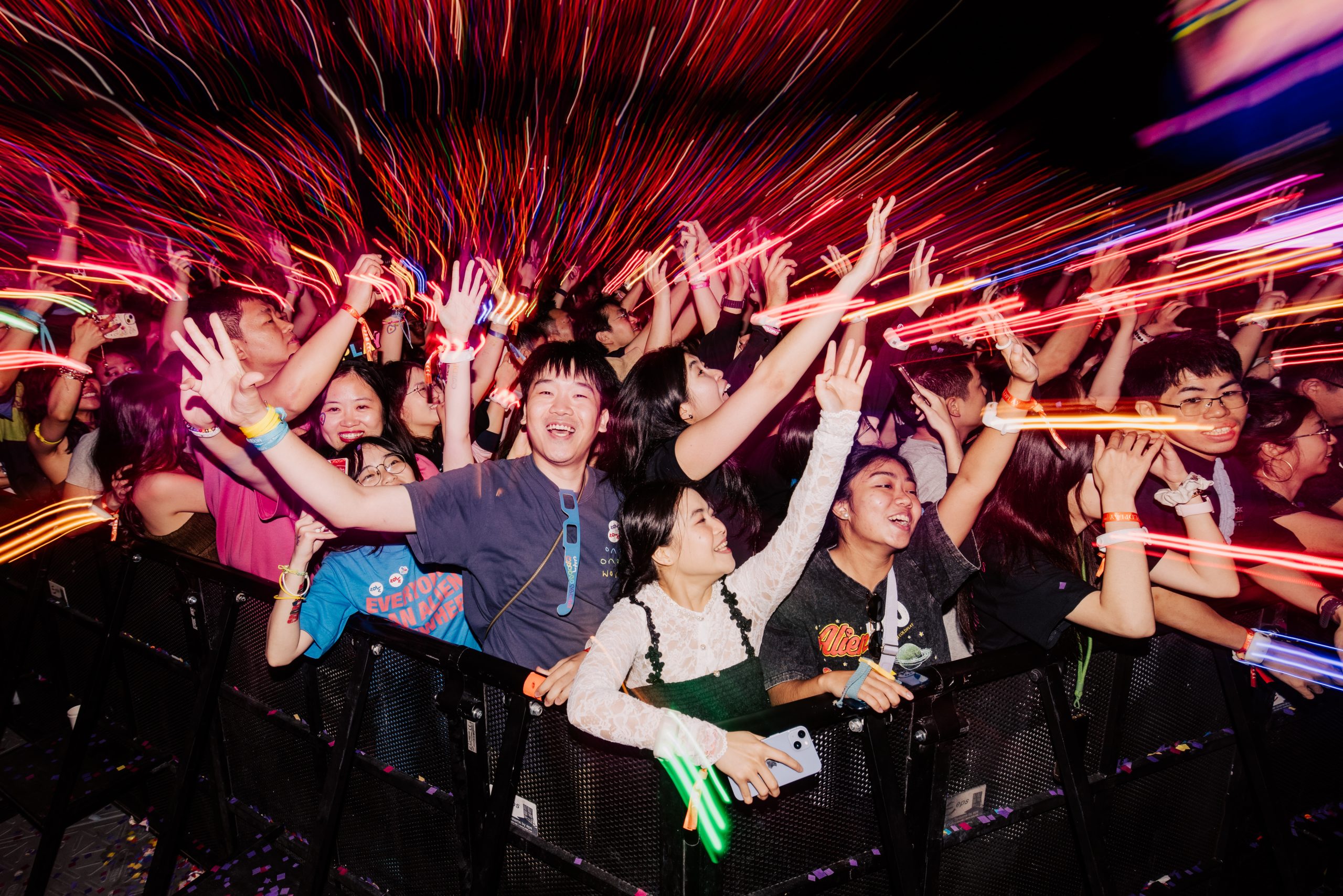Roasting coffee, sandalwood incense, pine trees in spring, and expensive cologne. Everyone has their favourite fragrance – which is just as well, since the average human is believed to be able to detect up to 350,000 chemicals.
Often, we take for granted our appreciation of certain scents, but scientists worldwide have dedicated considerable resources into studying and understanding the sense of smell – the only human sense that works 24/7. The results of olfactory research into the fragrant factors that stimulate mental and physical responses are adapted for various industries, notably medicine, academia and consumer goods production and marketing.
The applications of aromachology, the science of fragrance and smell, are diverse: research is ongoing in Japan into how essential oil scents can assist the treatment of Alzheimer’s Disease, while a US casino trial showed that gambling revenue increased by 48 percent after a pleasant aroma was suffused into a test area. Elsewhere, certain scents are being used to assist insomniacs and reduce stress for passengers on packed subway trains. Researchers have also surreptitiously placed odours in textbooks to test whether they enhance reading comprehension.
A profitable global industry is dedicated to devising, producing and selling scent products. While the most visible, and aromatic, is the consumer perfume industry, our olfactory perceptions are tantalised daily in less obvious, chemically enhanced, environments: the bread counter at the supermarket, the fresh coffee smell in the shopping mall and the sweet flowery fragrance in the hotel lobby. These aromas are all carefully researched and created to stimulate certain feelings and responses in consumers.
The appeal of scent branding is growing in a mass-communications world, where our visual and auditory senses are overloaded. Several companies worldwide have adopted their own corporate fragrances in an attempt to diversify the sensory outreach of their products and services. While we are accustomed to seeing a corporate logo, hearing the company commercial and touching its signature packaging – we are increasingly being encouraged to breathe in its branded scent.

Australia-based Air Aroma International, for example, works with clients such as Disneyland in Tokyo, Fitness First in Australia, and Lexus showrooms in Japan to create and diffuse signature scents to enhance their brands, indulge the senses and engage the emotions of customers. The company says the power of smell creates a lasting impression, and that scenting is highly effective in environments where other sensory triggers, such as the use of lighting, sound and luxurious surroundings, combine to create a definable mood.
Air Aroma is taking such collaborations to a new level by working with performance artists Jodie Ahrens and Will Tait to create a “multi-sensory theatre experience“. The project explores the potential of combining the scent technology industry with art to develop what it says is “a new performance language”. Experiential theatre performances will use the company’s scent diffusion technology and essential oil blends to stimulate desired neurological responses that complement the artistic themes. During test performances, audiences are blindfold, barefoot, sniffed at and pushed around in boxes to stimulate their sensual reactions.
The implications are intriguing for event planners, particularly since clients will increasingly seek to integrate their scent branding programmes into corporate meetings and launch parties – and because hospitality and event venues in Asia are adopting new fragrance diffusion technologies. These signature scents are not just restricted to the lobby and public areas: some hotels now offer an integrated scent package, including a choice of in-room fragrances, customised bathroom products, aromatherapy spa and wellness treatments and specially created function room scents.
Some analysts see this as part of a global trend whereby consumers seek new, fragrant life experiences. This view posits that large corporate perfumiers have defined a “scents sells” culture by drafting in global-brand celebrities, such as Madonna, David Beckham and Jennifer Lopez, to promote male and female fragrances. The Geneva-based International Fragrance Association, for example, says that consumers do look to an aromatic environment to add quality to their lives, purchasing scented candles, fragrance sprays, shower gels and pomanders to provide the benefits they seek.
However, the IFA adds that researchers believe the use of fragrances really can have a positive psychological impact – and this is where corporate brands and meeting planners can derive added scented value. For example, specific pleasant odours may heighten the senses and simultaneously enhance learning and information absorption, while others assist in maintaining alertness, boosting confidence or providing a sense of calm, particularly in stressful work scenarios. As the IFA concludes, aromas “add invisible colour to everyday life and special occasions, providing something of a deep, rich hue, which is often taken for granted”.
The ability to fuse sensory stimuli is a key competency for event planners. As corporate clients increasingly seek inventive meetings and inspirational messaging to invigorate, enthuse and retain staff in Asia’s tight labour markets, upping the meetings fragrance factor could offer beneficial brand outcomes.
A report called BrandSense: Building Brands with Sensory Experiences, by US consultancy firm Harvest Consulting, makes an interesting point about how information communication has evolved. “Ever since we began walking and raised our noses from the ground, vision came to dominate our view of the world,” it says. “Much of the information we receive to enable us to live enjoyably and effectively is visible or auditory. We tend to give less consideration to our primitive senses: touch, smell and taste.”
The report concludes that in a brand-cluttered world, successful outreach should involve targeting the full range of human senses, including smell. “Effective olfactory stimulation depends on a complex interaction of factors, but sound, pictures, words, smells, tastes and tactile stimuli are not as important individually as the relationships between them and the brand,” it states. “Hence, using sound, smell and taste should be used as part of the same palate to form a complete brand connection.”
Fragrant Hospitality
Leading hotel operators are increasingly adopting signature fragrances, not just to freshen up the lobby area but as part of ongoing strategic branding and guest experience enhancement programmes.
In Spring 2006, Westin Hotels launched a scented advertising execution promoting the White Tea scent, highlighted with notes of geranium and freesia, which it introduced into its hotels worldwide as part of its Sensory Welcome branding programme. Later that year, the company launched a White Tea by Westin retail collection, featuring a soy candle, gentle room oil diffuser and all-natural potpourri in response to customer demand for the signature scent.
In September 2006, Shangri-La Hotels and Resorts introduced its Essence of Shangri-La scent in the lobbies of selected hotels in China, Indonesia, Malaysia, Singapore, Taiwan, Thailand and the United Arab Emirates. Describing the scent as “fresh and clean, subtly Asian”, the company says the scent fuses “bottom notes of vanilla, sandal and musk, highlighted by top notes of light bergamot and tea spiced with ginger“. The non-allergenic, water-based fragrance is dispersed by an atomisation system featuring anti-bacterial and anti-smoke benefits.
Le Méridien recently announced a signature Sensory Experience branding incorporating scent, sound and use of light. Philips Lighting will work on new hotel lighting components, while New York-based perfume house Le Labo has created a signature scent. The new fragrance is designed to be an “olfactive statement” based on Le Méridien’s values, and aims to engage customer memory and emotions through the sense of smell.
In August 2007, Sofitel introduced a series of signature scents to its seven Australian properties, designed to motivate, uplift and increase memory. The fragrances are being incorporated into foyers, conference facilities, premium rooms, VIPs and suites, following a successful trail of the technology earlier in 2007. The company says its vision is“ for guests to select their preferred fragrance as easy as they would room service or the morning paper“.
The Portman Ritz-Carlton in Shanghai personalises the fragrance effect, with a special in-room bath menu. A dedicated bath butler will prepare one of four baths – a Chinese herbal bath, a rose essence bubble bath, a petal-strewn Bulgari Bath scented by a special bath tea bag, and the Ultimate Ritz-Carlton Bath with soft burning essence oil and geranium and Melissa essences.
TOP TIPS
• Remember delegates have five senses, not just sight and sound. We tend to underestimate the value of our primitive senses – touch, smell and taste.
• Take account of the “sensory package” – fragrant stimulants are most effective when combined with carefully crafted music, images and room design.
• Consider the combination of time and scent. Your sense of smell is least acute in the morning, and odours become easier to perceive as the day progresses.
• Experiment with fragrant infusions for brainstorming and creative planning meetings: 70 percent of our emotions are based on the things we smell.
• Combine signature fragrances to enhance individual experiences throughout an event; such as at the meeting venue, on the shuttle bus, in the delegates’ hotel rooms and as take-home gifts.
• Use scents as a downtime relaxant. Delegates often enjoy a spa treatment or aromatherapy massage between conference sessions.
• Try some creative post-event scented follow-up gifts to enhance brand recognition – smells can be accurately recalled over long periods of time.
Peter Gassner, executive assistant manager of Operations, Langham Place Hotel, Hong Kong
In June 2007, the Langham Place Hotel launched tailored banqueting packages featuring nine atmosphere fragrances for weddings, meetings and special events. Fragrances called Amorous, Blissful, Abandon and Forever & Ever are offered for weddings. Connect, a fragrance featuring ginger and lemon to assist attention and mental alertness is available for corporate meetings and conferences.?Other scents, including Champagne & Caviar and Let’s Party aromas are offered for special events.
What were the key factors for launching these new fragrance concepts?
PG: We have used a lobby fragrance in the hotel since we opened, and received very positive feedback from guests. In late 2006, we launched Perennial, a brand signature whereby we refresh the lobby scent, music, menus and teas each quarter to reflect the changing seasons. As part of this process, we also began researching the introduction of new fragrances for weddings, meetings and special events.
How did you research the new meeting and wedding fragrances?
PG: We worked with a fragrance specialist company in Hong Kong, run by a former perfumier, to identify the fragrances that would work best for each banqueting package. We then tested them at our own internal management and associate meetings.
The wedding fragrances were also tested with consumers at a weddings exhibition in Hong Kong. We chose the lemon and ginger fragrance for meetings because it helps keep people mentally refreshed, especially after meal and coffee breaks. This is often when attention levels can dip, so – if necessary – we can slightly increase the concentration in the rooms at these times.
You use the Scentjet aroma diffusion system. How does this work?
PG: The Scentjet machines are stand-alone and portable, and diffuse fragrances directly into the room, not through the air conditioning system. This gives more control. We place the machines in the room one hour before each meeting starts, to ensure equal dispersion. Each machine distributes for up to 150 sqm, so we would place one dispenser in each corner for events in our ballroom.
What has been the response from event management companies?
PG: The response has been very positive. At first, some companies were unfamiliar with the concept, as we are the first hotel in Hong Kong to use the Scentjet fragrances for meetings. However, we can introduce the concept gradually, for example, using the fragrance initially only during a coffee break, so that event planners can see the response before considering whether to use it in the main meeting or event. The hotel team has also created a scratch and smell fragrance tester to demonstrate the subtleties and characteristics of each scent.


